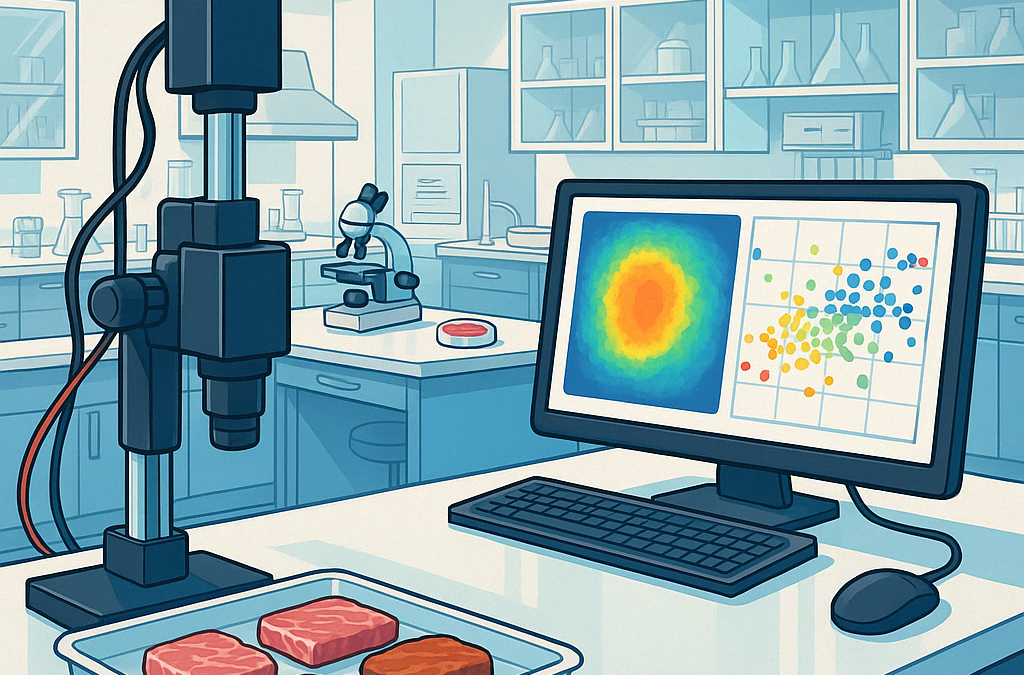Jiang, H., Yang, Y., & Shi, M. (2021). Chemometrics in tandem with hyperspectral imaging for detecting authentication of raw and cooked mutton rolls. Foods, 10(9), 2127. https://doi.org/10.3390/foods10092127
Ensuring the authenticity of meat products is essential for quality control and consumer trust. This study evaluates the use of hyperspectral imaging (HSI), combined with chemometric techniques, to detect the substitution of raw and cooked mutton rolls with pork and duck. Hyperspectral data (400–1000 nm) were collected from 180 samples. After extracting spectral information from specific regions, principal component analysis (PCA) demonstrated clear separation among meat types using the first two principal components.
To enhance model performance, spectral preprocessing techniques such as standard normal variate (SNV) and derivatives were applied. Classification models were developed using partial least squares-discriminant analysis (PLS-DA) and support vector machines (SVM). The PLS-DA model using raw spectra achieved a perfect 100% classification rate. Additionally, simplified models based on successive projections algorithm (SPA) maintained accuracy while reducing complexity.
Finally, pixel-level classification maps were generated to visualize the results, confirming that HSI combined with chemometrics effectively differentiates between authentic and adulterated meat, offering a powerful tool for non-destructive meat authentication.
Prompted by SmartControl, Powered by ChatGPT

